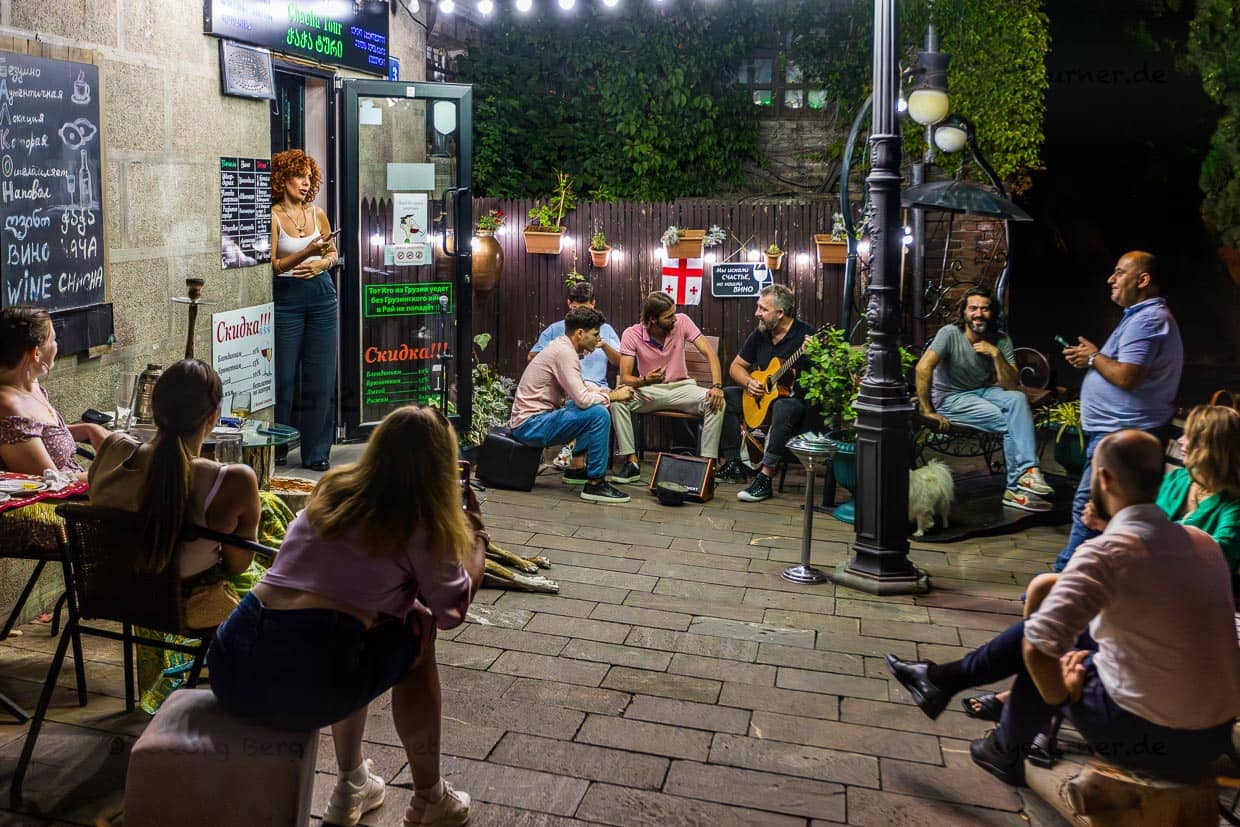Georgia is sometimes called the balcony of Europe, because the border between Europe and Asia is not clearly defined until today. Geologically, both continents are even united on the Eurasian continental plate. Situated on the southern flank of the Great Caucasus, Georgia is still marked by political and ideological directional struggles.

Walking through the capital city of Tbilisi, one notices above all the numerous graffiti that position themselves against Russia and for Georgia’s rapprochement with Europe against the backdrop of the war in Ukraine. Overall, however, the city exudes a friendly welcoming culture. People from Russia, Armenia, Azerbaijan and Ukraine can almost only endure it here together at one table.


Today’s capital TbilisiTbilisi

St. Nino as the “Enlightener of Georgia
A young woman convinced the Georgian king of Christianity in the 4th century through her healing skills. Christianity first spread in the Caucasus and became the state religion in Georgia, the second country after Armenia. Many churches in Georgia are dedicated to Saint Nino. In the Sioni Cathedral in Tbilisi, Nino’s grapevine cross is venerated, still held together by her own hair.

Chronicle of Georgia
Outside the capital, on a hill overlooking Lake Tbilisi, artificially created as a water reservoir, stands a curious monument. The sculptor Zurab Zereteli began planning it in Soviet times, and in 1985 it was not yet completed, but its brute gigantomania was already visible from afar. What the many biblical motifs from the New Testament are supposed to have to do with the history of Georgia is hardly comprehensible from today’s perspective. After all, at the same time in Georgia many churches were converted by the Soviets into assembly halls, animal stables and prisons.



Today, many monuments from the Soviet era in Georgia lead an ambivalent existence. At a time when wars are being waged between countries formerly united under the umbrella of the Soviet Union, hero worship seems stale. And the position of the storyteller can also lead to the question of whether history really happened as it is portrayed. Many Georgians are disturbed by Zurab Tsereteli ‘s proximity to the political power circles in Moscow. They doubt that statements made with such force are any truer than the political opinions expressed on the walls of downtown buildings.

More stories from Georgia
In Georgia, we entrusted ourselves to Giorgi Chachua, who infected us with his enthusiasm for his home country on the trekking tour with packhorses through Tusheti. He is a qualified tour guide and co-owner of the Georgian travel agency Enjoy Georgia. Contrary to what the name suggests, many customers from German-speaking countries book here. The staff are flexible and communication is uncomplicated. As we didn’t have to organise our own luggage transport, catering and itinerary, we were able to fully immerse ourselves in the interesting information provided by the hiking guide. Bonus point: our Georgian guide had studied history. Georgia’s eventful history, the political street art or the parliaments under the open sky are just as much highlights of a trip to Georgia as the architecture of the sky bridges and the fantastic Dezerter food market in the capital Tbilisi. One of the most curious monuments can be found just outside the capital. The Chronicle of Georgia is visible from afar in its brute gigantomania. The fantastic Georgian cuisine and the hospitality of the people are also part of the travelling experience in Georgia.


